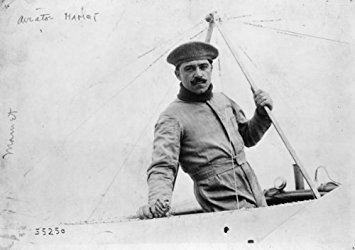Name Nick Mamer Role Aviator | Died 1938 | |
 | ||
Nicholas B. “Nick” Mamer (1897 – 1938) was a noted aviation pioneer and pilot in the Pacific Northwest during the 1920s and 1930s.
Mamer served with the United States Army Air Service during World War I, and later settled in Spokane, Washington, establishing the Mamer Flying Service and Mamer Air Transport firms. Mamer was a flight instructor and charter pilot, and was involved in early forest fire patrol flights for the United States Forest Service. Among his flight pupils was Bob Johnson, a well-known aviation pioneer in Missoula, Montana.
Mamer is perhaps best remembered for undertaking a pioneering long-distance endurance flight that began on August 15, 1929. The flight utilized a Buhl Airsedan biplane named the Spokane Sun-God; Mamer was at the controls, and was accompanied by Art Walker acting as mechanic and refueling hoseman. Beginning in Spokane, Mamer and Walker flew to San Francisco, on to New York City and back to Spokane five days later, without intermediate stops. Aerial refueling was accomplished at a number of points along the flight path (one was over Missoula on the return trip). Mamer and Walker did not sleep during those five days aloft. They set a number of records, one of which was a world's record non-stop flight of 7,200 miles.
By the late 1930s Mamer was employed by Northwest Airlines, working as a pilot on that carrier's Seattle-Minneapolis route. On January 10, 1938, Mamer was at the controls of Northwest Airlines Flight 2, a Lockheed Model 14 Super Electra when the plane crashed. Parts of the tail section were torn from the aircraft as it flew over the Bridger Range northeast of Bozeman, Montana and the plane went into a dive. Mamer, copilot Fred West and eight passengers died instantly. Later, an investigation revealed that the tail structure had failed on the new design from what is known as "natural resonance, or period of vibration".
